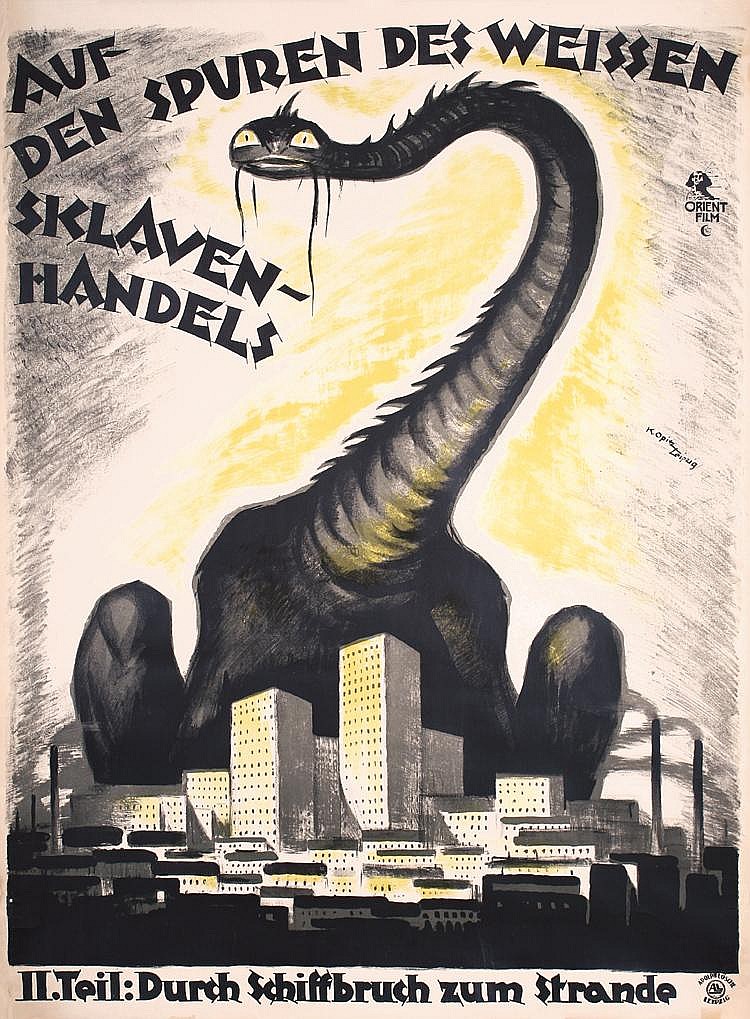Actually, it’s not very new, and even if you could find a copy, it probably wouldn’t be what you expect. This one is from 1921 and I’ve so far been unable to hunt down much information on it. The following intriguing poster came to me via early film aficionado Michael Organ.
The title Auf den Spuren des weissen Sklavenhandels. II. Teil Durch Schiffbruch zum Strande translates as “On the Trail of White Slave Traders, Part 2: The Stranded Shipwreck”. It is a German film from 1922 [according to KinoTV] and was directed by Edmund Linke. The website KinoTV, which references its source as Der Film #19, 1922 (Kritik), claims that the film was also written by Linke and stars Herbert Hübner, Kadja Lana, Anna Perra, Robert Pirk and Fritz Reiff. That seems to be the extent of available information, though the “Part 2” in the subtitle suggests that it is part of a serial or series.
Filmportal references a film called Auf den Spuren des weissen Sklavenhandels. I Teil (1921) by Edmund Linke, which is presumably the precursor. Its production company is given as Orient-Film, Linke & Co. (Leipzig) and the producer as Oskar Linke. It does not list a Part 2.
Referring to the poster, Michael Organ commented to me: “It is very much German Expressionism, so the monster probably relates to the evil of the slave trade, rather than actually being a monster/dragon as in Lang’s Nibelungen (1924). The image is very cool, though.”
It is indeed. If anyone out there has more information on it, let us know.



Hi R. H.,
it happens that I am looking for some of the Orient Film productions myself (i.e. “Zopf und Turban” from 1920) for an Aunt of my father seemed to have played a role in it under the pseudonym of “Mar-Káh”. She later left Leipzig, Germany, Europe and immigrated in the U.S., where she worked as a stage-actress (Lisa Markah) mainly in NYC (as far as I know). The Orient-Film movies were obviously low-budget productions. An orient-carpet trader in Leipzig was responsible for the stage props and the “film-studio” was a wintergarden. The movie-themes were mainly stories around harems and societies in the middle east. It seems that oriental themes and harem-look used to be chiq in the Weimarer Republik. It seems, there are no film copies left after all, but there were for sure no monster-movies among them. Greetings from Germany, Matthias Kalbe
PS: if you happened to find out more about remaining film-copies, I would be thrilled!